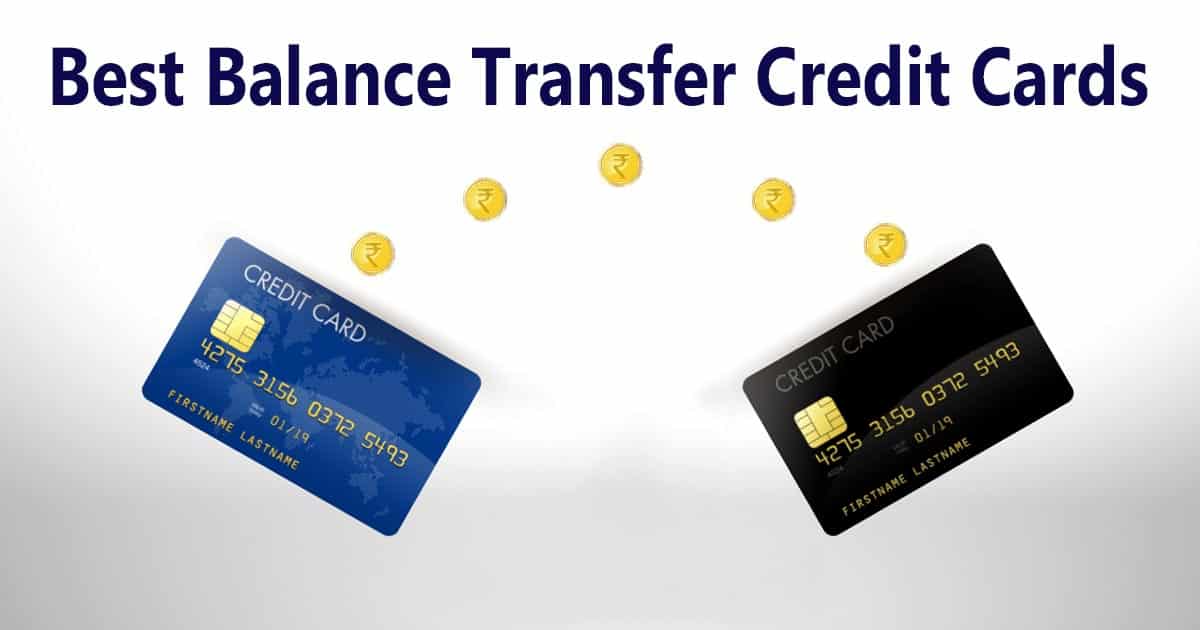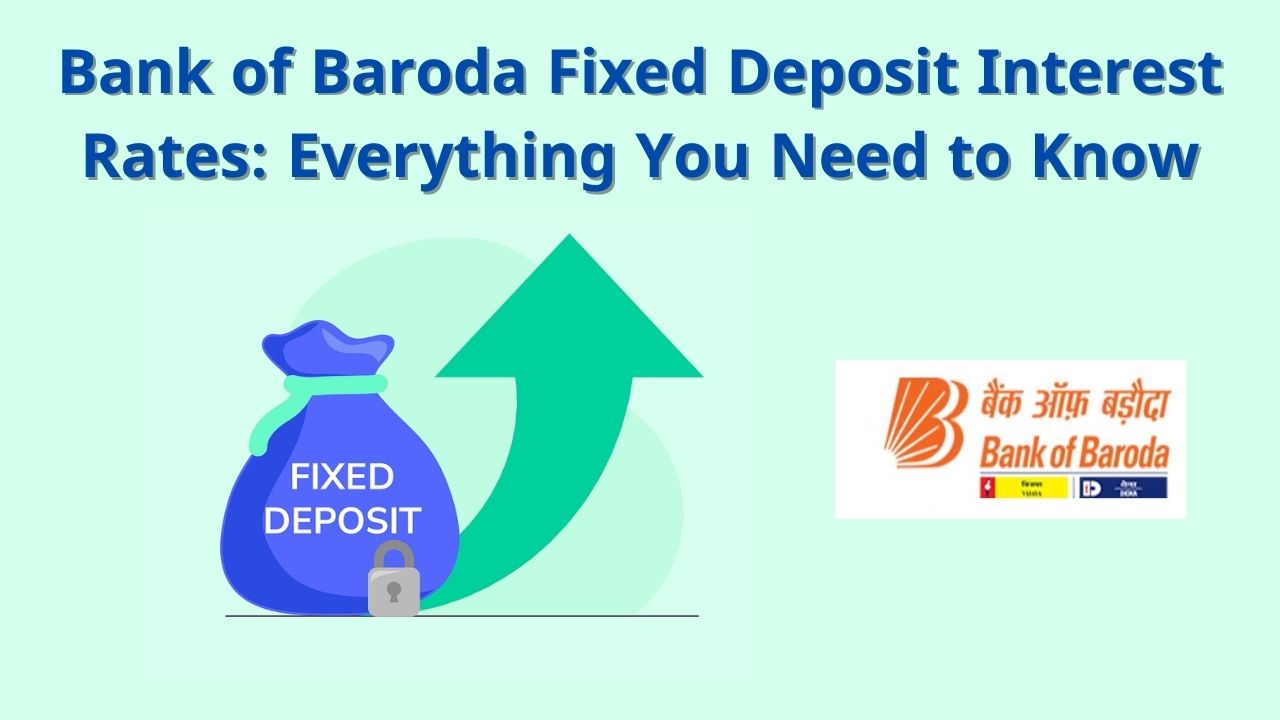There may be times when you are unable to make your credit cards payments on time. This could be because you require money right away for a medical emergency or job loss, or it could be because your credit card is still accruing interest on the outstanding balance. then you need a Best Balance Transfer Credit Cards.

Many credit card users recently encountered this problem when all economic activity ceased during the COVID lockdown. To make things simpler, many card issuers provide a choice to transfer your outstanding balance to a credit card that offers a grace period during which you pay either no interest or a lower rate of interest. The Balance Transfer Facility is the name of this facility.
How Does Balance Transfer work?
When you transfer an outstanding balance from one credit card to another, the new card issuer pays the old card issuer the outstanding amount; as a result, you now owe the new card issuer credit, which you must repay in accordance with the terms and conditions of the new issuer.
The interest rate is typically zero or very low during the buffer period that you have to pay off your debt.
It is important to note that balance transfers often come with a fee, typically around 3-5% of the amount being transferred. It is also crucial to make sure you pay off the transferred balance within the buffer period to avoid high interest rates and additional fees.
Credit Card Balance Transfer Advantages and Disadvantages
A credit card holder may choose a balance transfer if he is unable to pay off all of his outstanding balances in full. He will be able to pay off all of his debts in this manner, leaving him with just one outstanding obligation.
The advantages of balance transfer credit cards are as follows
Stabilizes your credit score – Once you’ve been given the go-ahead for a balance transfer, your interest rate will be reduced, making it simpler for cardholders to pay off their debts more quickly. Once completed, the cardholders’ credit scores will begin improving automatically, and over time, this will assist them in stabilising their credit scores.
Interest-Free Period – After a balance transfer, credit card companies also offer an interest-free period for new purchases. Customers can avoid paying interest on new purchases in this manner.
Reduced Financial Burden – When compared to other credit cards, the interest rate that is charged on balance transfer credit cards is quite low. In the case of other credit cards, cardholders are required to pay interest at a monthly rate of 3.5%, while balance transfer credit cards have an interest rate of 1.8%. Given this, the cardholder’s financial burden is automatically lessened because he now has to pay a lower interest rate.
Other advantages – After a balance transfer, credit card companies offer an interest-free period on new purchases. Customers can avoid paying interest on new purchases in this manner.
Not all benefits associated with balance transfer credit cards are true. Everything has advantages and disadvantages, and balance transfer credit cards are no exception.
The disadvantages of balance transfer credit cards will now be discussed
End-up Paying Higher Interest Rate – You will end up paying a higher interest rate on your balance transfer if you apply for a credit card but are not approved for promotional interest rates due to factors like your credit score or existing debt.
Increased debt risk- Since you’ve consolidated all of your debt onto one card, you now have access to more credit. The credit card holder will need to be strict not to exceed this available credit limit because doing so could lead to him falling back into debt.
A balance transfer could lower your credit score- Your credit score will be impacted if you apply for or are approved for a new credit card. This is due to the negative effects on your credit score that will occur if your credit utilisation ratio rises above 30% at any time.
Balance Transfer Can Be Expensive – When you apply for a balance transfer, you must pay both the annual fee for the new credit card and the balance transfer fee. Therefore, you should carefully review all the associated fees and charges before transferring your balance to a new credit card; they should be lower than the interest you must pay on the old credit card.
Who Can Apply For a Credit Card Balance Transfer?
You can pay off your high-interest credit card debts with the aid of a balance transfer facility, which is a crucial tool. Therefore, those who have a sizable amount of debt with a high interest rate on their names may apply for a balance transfer. They can effectively pay off their debts with the help of this facility without incurring significant fees.
How to Transfer a Balance between Credit Cards?
The best way to settle massive and unpaid credit card debt is through a credit card balance transfer. Transferring a credit card balance, however, only makes sense when the bank to which you are transferring the balance offers rates that are more advantageous than the credit card on which the balance is still owed.
To make applying for the credit card balance transfer facility easier, various banks provide forms. When requesting a credit card balance transfer, the following information must be provided.
Credit Limit
Expiry date of the credit card
Outstanding credit amount
Credit card number
To accept your request for a credit card balance transfer, the majority of banks need a few supporting documents to be provided.
Credit card photocopies
Last 3-6 credit card bill statements
Address proof
The best banks for credit card balance transfers are listed below
1. SBI credit card balance transfer
Based on a general principle, SBI’s credit card balance transfer service enables you to transfer your outstanding balance to an SBI card at a low interest rate. SBI offers the option of breaking the bill into manageable EMIs when transferring credit card balances.
Interest rate: Choose a 2-month repayment period if you don’t want to pay interest on your bills. Interest would be charged at a rate of 1.7% per month if you chose the six-month option.
Processing fees: For choosing the option of a 6-month tenure, there will be no processing fee; however, for choosing a 2-month tenure, there will be a fee of 2% or Rs 199.
You can submit an application for a balance transfer online at the bank’s official website, via SMS, a mobile app, or by calling a customer service representative.
2. ICICI Bank Credit Card balance transfer
You must pay a minimum balance of Rs. 15000 on the other card in order to be eligible for a balance transfer with ICICI Bank in order to use the ICICI Credit Card. The client should have a solid history with ICICI Bank in terms of credit card purchases and transactions.
You must make balance transfers up to Rs. 3 lakh.
According to the customer’s profile, the bank determines the applicable interest rate at its sole discretion.
You have the option of paying back the loan in three or six monthly installments.
Demand Draft or NEFT would be the method of transferring funds.
To complete the transfer, the customer must send their personal and financial information.
3. HDFC Bank Credit Card Balance Transfer
Based on how the cardholder uses their credit card, the HDFC Credit Card Balance Transfer is calculated. You can call the customer care representative at HDFC Bank to inquire about your eligibility for the bank’s services.
Here are the main attractive features of HDFC Bank Credit Card Balance Transfer
Minimal documentation is required
You can select a repayment period of 9 to 48 months.
The transferred amount is subject to an interest rate of 1.10% per month.
One option for quick disbursal
EMI is between Rs. 27 and Rs. 10,000.
4. Standard Chartered Bank Transfer Credit Cards
Balance transfers from credit cards issued by different banks to Standard Chartered are a simple way for you to pay any outstanding balance.
Here are the main features credit card balance offer of SCB
Customers can transfer balances up to Rs 5 Lakhs thanks to a Standard Chartered Bank facility.
The benefits of a credit card balance with SCB include: The first six months of interest are charged at 0.99%; after that, the card will be charged interest as needed.
Customers now have the option to pay a minimum of 5% of the transferred amount each month, and they can take advantage of this flexibility by sending the bank an SMS requesting a balance transfer.
There is no need for separate EMIs or postdated checks. It is a straightforward procedure.
5. Kotak Mahindra Balance Transfer Credit Cards
If you’re looking for a reputable bank that provides a credit card balance transfer option, Kotak Mahindra Bank is another excellent choice.
Features of Kotak Mahindra Credit Card Balance Transfer
The minimum and maximum transferable amounts are Rs 2500 and not more than 75% of your credit card limit, respectively.
Kotak’s credit card balance transfer procedure can be started by SMS, calls, or a bank-maintained online portal. INR 349 in processing fees for every INR 10,000.
Balance transfers on Kotak credit cards are available with 0% interest for 90 days. Options for repayment include 3, 6, or 12 monthly installments.
Utilize paperless money transfers.
6. RBL Bank
For cardholders, RBL Bank also provides a balance transfer option. The amount transferred from your credit card with another bank may be repaid in three, six, or twelve easy monthly installments, depending on your preference.
By utilizing paperless money transfers, you can easily make payments and transfers without the need for physical cash or checks. This not only saves time but also reduces the risk of loss or theft of money.
FAQs on Credit Card Balance Transfer
Q. What is a credit card balance transfer?
Ans. A credit card balance transfer, which allows you to transfer an outstanding balance from one bank’s credit card to another and pay it off in monthly installments at a low or no interest rate, can significantly lessen your debt load.
Q. Is balance transfer helpful?
Ans. The interest rate you are currently paying on your current credit card and the interest rate plus fees levied by the new credit card will determine how profitable a balance transfer is for you. If there is a significant difference, you will undoubtedly be able to avoid paying additional money in interest.
Q. Does credit card balance transfer take a long time to process?
Ans. No. The process of transferring a credit card balance is simple and quick. The amount of time required varies from bank to bank and is typically a few days.
Q. How many times can I transfer my credit card balance?
Ans. continually transferring your credit card balance is a bad idea. Additionally, banks do not accept routine balance transfers. As a result, the number of times you can transfer your balance is purely a matter of the bank you have in mind’s discretion.
Q. Is there a processing fee to do a credit card balance transfer?
Ans. Yes, a balance transfer may be subject to a processing fee of 1-3%.
Q. Can I do a complete balance transfer of my outstanding credit card dues?
Ans. You can transfer all of your unpaid credit card debt to the new card, yes.
Q. How soon should I repay the outstanding balance after a balance transfer?
Ans.Typically, credit card companies give customers up to 180 days to pay off their entire balance without incurring interest.







